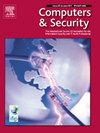Gamifying information security: Adversarial risk exploration for IT/OT infrastructures
IF 4.8
2区 计算机科学
Q1 COMPUTER SCIENCE, INFORMATION SYSTEMS
引用次数: 0
Abstract
Today’s interconnected IT and OT infrastructure faces an array of cyber threats from diverse actors with varying motivations and capabilities. The increasing complexity of exposed systems, coupled with adversaries’ sophisticated technical arsenals, poses significant challenges for organizations seeking to defend against these attacks. Understanding the relationship between specific attack techniques and effective technical, organizational and human-centric mitigation measures remains elusive, as does grasping the underlying principles of information security and how they may be applied to cyber defense.
In response to these challenges, we propose a gamified metamodel that combines well-established frameworks, including MITRE ATT&CK, D3FEND, CAPEC, and the NIST SP 800-53 security standard. The programmatic implementation of the model, “PenQuest”, combines elements of game theory with cybersecurity concepts to enhance risk assessment and training for IT practitioners and security engineers. In PenQuest, participants engage in a digital battle — attackers attempt to compromise an abstracted IT infrastructure, while defenders work to prevent or mitigate the threat. Bot opponents and the technical foundation for reinforcement learning enable future automated strategy inference.
This paper provides an in-depth exploration of the metamodel, the game’s components and features built to translate cybersecurity principles into strategy game rules, and the technical implementation of a mature, ready-to-use education and risk exploration solution. Future work will focus on further improving the attack likelihood and detection chance algorithms for seamless risk assessment.
求助全文
约1分钟内获得全文
求助全文
来源期刊

Computers & Security
工程技术-计算机:信息系统
CiteScore
12.40
自引率
7.10%
发文量
365
审稿时长
10.7 months
期刊介绍:
Computers & Security is the most respected technical journal in the IT security field. With its high-profile editorial board and informative regular features and columns, the journal is essential reading for IT security professionals around the world.
Computers & Security provides you with a unique blend of leading edge research and sound practical management advice. It is aimed at the professional involved with computer security, audit, control and data integrity in all sectors - industry, commerce and academia. Recognized worldwide as THE primary source of reference for applied research and technical expertise it is your first step to fully secure systems.
 求助内容:
求助内容: 应助结果提醒方式:
应助结果提醒方式:


